| CLICK HERE FOR INDEX PAGE |
| |
| FOLDING BARS |
| V.Ryan © 2019 |
| |
| PDF FILE - CLICK HERE FOR PRINTABLE WORKSHEET |
| |
| Folding bars are a tool / piece of equipment, for working with sheet metal. They are placed in a vice and used to ‘fold’ the sheet metal, to a 90 degree angle. ‘Folding’ is the correct term for bending or forming sheet metal to an angle. |
| |
| Commercially available folding bars, are the ‘sprung’ type, which looks a little like a large split pin. However, there are other types. The ‘bolted’ type can be homemade and the bolts are tightened, holding the sheet metal securely, before being placed in a vice. ‘L-Shaped’ folding bars are an alternative and have the advantage, that if a 90 degree fold is required, the flat top surface restricts the fold, so that it cannot go beyond 90 degrees. |
| |
 |
| |
|
|
| |
The bolted and L-shaped folding bars have one technical advantage over the sprung type. One edge can be rounded off, to provide a ‘smooth’ corner, rather than a sharp corner, when the sheet metal is folded.
The diagram opposite, shows that one edge on the folding bars has been rounded. As the sheet metal is ‘folded’ to the 90 degree angle, the ‘corner’ produce has a radius. |
|
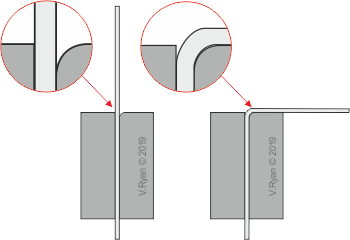 |
| |
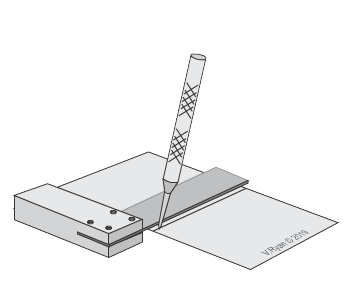 |
|
Sheet metal can be marked out with a scriber, although this can create a permanent line, or a pencil, although this can be rubbed out inadvertently. Alternatively, the surface can be ‘smeared’ with engineers blue and a scriber used to lightly scribe a line across the ‘blued’ surface, clearly showing a line, that can be wiped clean with methylated spirits later. |
| |
|
|
| |
| Before folding sheet metal, it is good practice to smooth all edges, using a hand file, followed by emery cloth. Rough / sharp edges can be a safety issue and are more difficult to remove once the sheet metal is folded to a 3D shape. |
|
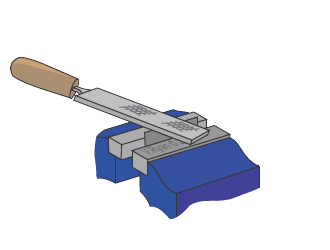 |
| |
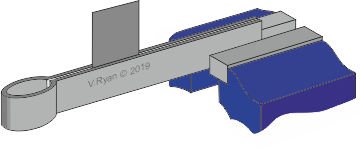 |
|
The sheet metal is place between the two working surfaces of the folding bars and placed in a vice. It is important to double check, that the sheet metal is positioned accurately in the folding bars, before securing in the vice. |
| |
| Hand pressure is normally sufficient, when folding ‘thin’ sheet metal (especially aluminium or copper), but a mallet can be used if required. As a precaution, wear workshop safety gloves, which will protect your hands, if they slip along the ‘shape’ edge of the sheet metal. |
| |
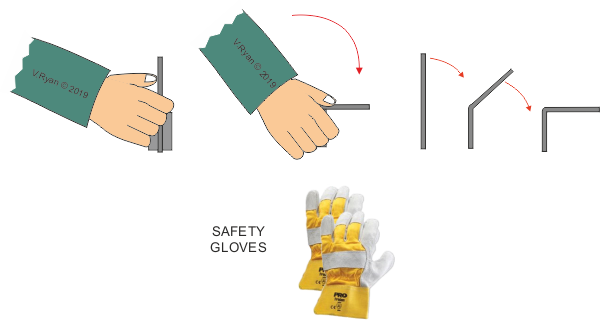 |
| |
|
|
| |
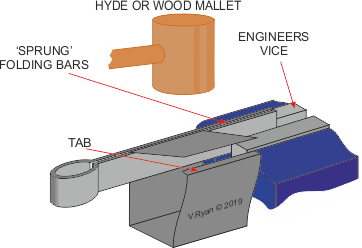 |
|
A mallet is being used here, to help form a ‘box’ from sheet metal. Notice the addition of a ‘tab’, which will be soldered later, completing the box. |
| |
| CLICK HERE FOR EQUIPMENT AND PROCESSES INDEX PAGE |
| |
|
| |
|






